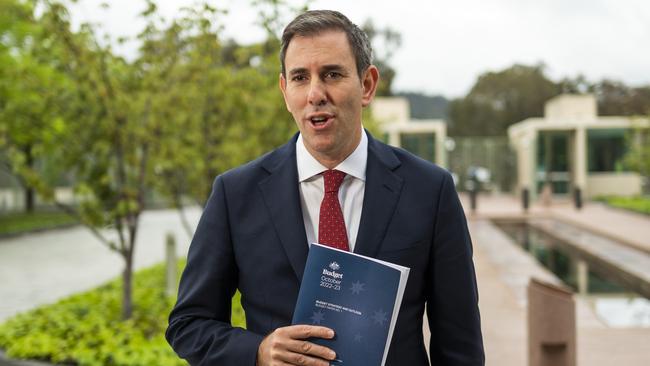Jim Chalmers’ budget strategies mean Australia faces a clear risk of many years of stagflation: Robert Gottliebsen


Few Australian leaders have experienced the stagflation phenomenon. In the 1970s, when Australia last experienced stagflation, Chalmers was a baby and Reserve Bank governor Philip Lowe a young teenager. I was writing Chanticleer for the Financial Review.
Stagflation – low growth but high inflation – is totally different to anything Australians have experienced in the last four decades. Avoiding stagflation without severe pain requires an understanding of what fans it.
At its core, stagflation is created when there are a series constraints to supply at a time of strong demand. This creates a price spiral that does not improve productivity. Normally stagflation is not good for equity asset values like shares and property.
In Australia at the moment, the biggest supply constraint is labour.
There are several budgetary moves that will assist labour supply. The budget attempts to release the artificial constraints on visas and forecasts that migration will rise from 150,000 to 235,000. The child care measures will also help increase the supply of labour.
While there are programs to improve the quality of teaching and skills training, the budget does not address arguably the two biggest constraints to labour supply – the education system is not producing sufficient young people who are work ready and the Baby Boomers leaving the workforce.
Many young people have come to like the lifestyle they embraced during the Covid-19 pandemic and are not motivated to join the workforce. Anecdotally, some employers tell me the system the Coalition had to transfer the unemployed to work was abandoned by Labor just as it was starting to work.
The massive number of Baby Boomers who distorted the economy as they passed through their life changes are now reaching a retirement age. Many during Covid-19 came to like a reduced level of work and even more have a level of savings that makes them believe they can afford to stop working. In the building industry, vast numbers have had enough and are leaving – increasing skills shortages and boosting costs given the government’s infrastructure plans.
Keeping Baby Boomers and their skills in the workforce or enticing others to return to work will be an essential part overcoming the labour shortages. The solution may involve tax, pension and superannuation incentives helped by the fact that many retirees are running short of cash to meet their lifestyle objectives.

Treasury is forecasting a dramatic fall in the growth rates of the US, China and Europe. In a globalised world, that would cause an abundance of goods. Indeed, supply chains are already improving rapidly.
But now we face a separation of the world into trading bocks which means there will be shortages of certain semiconductors and other essential components for the production of mobile phones, cars and other goods – supply will be constrained.
The budget strategies aim to develop Australian industry.
While its an important strategic objective, unless we improve productivity it will lift our costs. Meanwhile the Russian war in Ukraine is creating global shortages including food.
So far our clumsy attempts to move electricity generation from coal to renewables is making it less reliable and more expensive. The budget has plans to reverse this but Canberra has a track record of failure in such areas.
During the pandemic, enterprises were reluctant to pass on cost rises into prices but now price rises are accepted by the community as inevitable – this dangerous attitude is an important feature of the stagflation phenomenon.
A second linchpin is that the price rises pass into the wages system. In the 1970s wages were linked to the cost of living so there was a hard to break flow through.
The most dangerous part of the budget is the encouragement it gives to passing costs rises into wages.
While its part of fairness – given that inflation is tipped to be 7.75 per cent in the December quarter – accelerating wages threatens to pour petrol on the inflationary fire.
The government is going to make contracting more difficult which will not only make it harder for those with mortgage loans to generate extra revenue but further limit the labour supply.
Given we plan bigger and bigger deficits that inevitably stimulate demand, Australia now has only one major weapon against inflation – higher interest rates. They mean lower prices for shares and property and if stagflation gets locked in then those asset values will remain at the lower levels for extended periods.
Treasury are crossing all their fingers and hoping that the Commonwealth Bank is right and the higher interest rates will smash the economy given their impact on recent mortgagees. Treasury expects Australian growth to fall from 4.9 per cent in calendar 2021 to a scary 1.5 per cent in 2024 – a thumping 70 per cent fall. They believe the pain of that fall will be so severe that inflation will be beaten.
Treasury hope the US fall will be even steeper so the Federal Reserve will lower their rates enabling us to do likewise without destroying the currency.
The alternative is that stagflation ends.



Jim Chalmers’ budget strategies mean Australia faces a clear risk of many years of stagflation. The Treasury remedy to prevent stagflation is a horrific 70 per cent decline in the Australian growth rate. But that’s not the budget strategy.